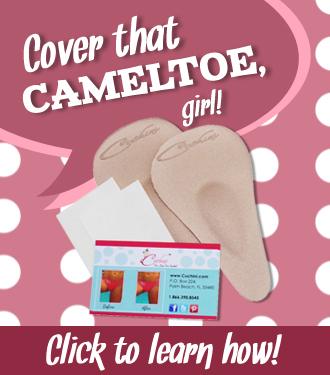 To keep the bedroom clean and relaxing, we make it a point to change and wash the bed sheets and pillowcases every other week (yes, you heard that right—the ideal laundry frequency is every other week). Aside from regularly washing your bed linens, have you been paying attention to your actual pillows? Some us go straight to bed without taking a shower, while others sleep while the hair is still wet. So can you imagine the amount of germs and bacteria that can be found on one pillow alone?
To keep the bedroom clean and relaxing, we make it a point to change and wash the bed sheets and pillowcases every other week (yes, you heard that right—the ideal laundry frequency is every other week). Aside from regularly washing your bed linens, have you been paying attention to your actual pillows? Some us go straight to bed without taking a shower, while others sleep while the hair is still wet. So can you imagine the amount of germs and bacteria that can be found on one pillow alone?
Most people do not realize that their pillows can harbor lots of gross and icky things that build up over time —dirt, oils, saliva, sweat, bacteria, mold, and even fungi.
Fancy resting your head on a pillow filled with bacteria? No, thanks! A research done by Good Housekeeping also reveals that our pillows and bedding absorb around 200 ml of sweat every night! Suffice to say, our pillows can make us sick (or even break us out), especially if we don’t wash and clean them regularly.
The easiest way to avoid sleeping with germs and getting sick is regularly cleaning and washing your pillows. You can do it before you change the bed sheets and pillowcases so that by the time your crisp bed linens are ready, you’ll have clean pillows to cover and use. How often should you wash your pillows?

You only need to clean pillows two or three times a year (or every three to six months). You also want to replace it after two years. After two years of use, more than a third of a pillow’s weight could be made up of dust mites (living and dead), dust mite droppings, dead skin, and bacteria.
There are different ways to wash and care for your pillows because it depends on the types of pillows you have at home. But you can get started with these reminders.
How to clean and wash your pillows
Fluff your pillows
Before leaving the bedroom, don’t forget to fluff your pillows to help remove dust. Doing this helps maintain the form of your pillows as well.
Air them out
Can’t stand the smell of non-sun dried pillows? If you’re pressed for time, you can air out your pillows and leave it under the sun to let fresh air work its magic. Sprinkling baking soda all over the pillow before placing it under the sun for three hours to get rid of bad odors. Sunlight naturally kills many types of bacteria, and the baking soda will absorb the odors. Once you’re happy with the fresh smell, you can brush off or vacuum the remaining baking soda.
Read the care label first and be prepared to wash your pillows
Given the materials of your pillows, it takes a bit for one pillow to dry. It’s best to start washing them early so you have enough time left for drying each. Before throwing your pillows in the washing machine, make sure you read the care labels attached to it first. There are pillows that are meant to be dry cleaned.
Vacuum foam pillows
As the name suggests, foam pillows have foam that absorb water. Make sure you dry them well to avoid mildew. To clean foam pillows, Hunker suggests attaching the upholstery cleaning attachment on your vacuum cleaner then vacuuming both sides of the pillow. To deal with stains, you can remove it using a clean towel and soapy water. Place it in the dryer afterwards or you can air it out.
Invest in pillow covers
Once you’re done with the washing and drying, protect the pillows from dust and dirt using airtight pillow covers. As an alternative, you can also use two pillowcases at once.
To keep the bedroom clean and relaxing, we make it a point to change and wash the bed sheets and pillowcases every other week (yes, you heard that right—the ideal laundry frequency is every other week). Aside from regularly washing your bed linens, have you been paying attention to your actual pillows? Some us go straight to bed without taking a shower, while others sleep while the hair is still wet. So can you imagine the amount of germs and bacteria that can be found on one pillow alone?
Most people do not realize that their pillows can harbor lots of gross and icky things that build up over time —dirt, oils, saliva, sweat, bacteria, mold, and even fungi.
Fancy resting your head on a pillow filled with bacteria? No, thanks! A research done by Good Housekeeping also reveals that our pillows and bedding absorb around 200 ml of sweat every night! Suffice to say, our pillows can make us sick (or even break us out), especially if we don’t wash and clean them regularly.
The easiest way to avoid sleeping with germs and getting sick is regularly cleaning and washing your pillows. You can do it before you change the bed sheets and pillowcases so that by the time your crisp bed linens are ready, you’ll have clean pillows to cover and use. How often should you wash your pillows?
You only need to clean pillows two or three times a year (or every three to six months). You also want to replace it after two years. After two years of use, more than a third of a pillow’s weight could be made up of dust mites (living and dead), dust mite droppings, dead skin, and bacteria.
There are different ways to wash and care for your pillows because it depends on the types of pillows you have at home. But you can get started with these reminders.
How to clean and wash your pillows
Fluff your pillows
Before leaving the bedroom, don’t forget to fluff your pillows to help remove dust. Doing this helps maintain the form of your pillows as well.
Air them out
Can’t stand the smell of non-sun dried pillows? If you’re pressed for time, you can air out your pillows and leave it under the sun to let fresh air work its magic. Sprinkling baking soda all over the pillow before placing it under the sun for three hours to get rid of bad odors. Sunlight naturally kills many types of bacteria, and the baking soda will absorb the odors. Once you’re happy with the fresh smell, you can brush off or vacuum the remaining baking soda.
Read the care label first and be prepared to wash your pillows
Given the materials of your pillows, it takes a bit for one pillow to dry. It’s best to start washing them early so you have enough time left for drying each. Before throwing your pillows in the washing machine, make sure you read the care labels attached to it first. There are pillows that are meant to be dry cleaned.
Vacuum foam pillows
As the name suggests, foam pillows have foam that absorb water. Make sure you dry them well to avoid mildew. To clean foam pillows, Hunker suggests attaching the upholstery cleaning attachment on your vacuum cleaner then vacuuming both sides of the pillow. To deal with stains, you can remove it using a clean towel and soapy water. Place it in the dryer afterwards or you can air it out.
Invest in pillow covers
Once you’re done with the washing and drying, protect the pillows from dust and dirt using airtight pillow covers. As an alternative, you can also use two pillowcases at once.
 Did you enjoy this article?
Did you enjoy this article?






